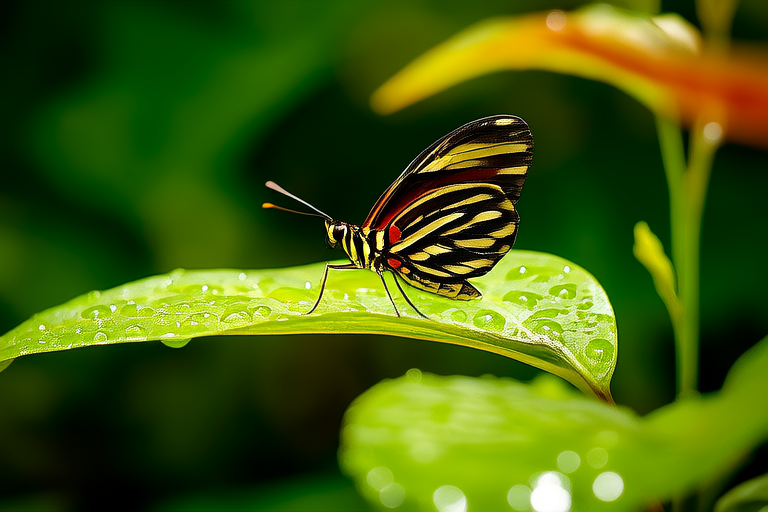Setting Up an Ideal Living Environment for Chameleons
Chameleons are fascinating creatures with unique needs that must be met to ensure their health and well-being. Creating an ideal living environment involves understanding their natural habitat and replicating it as closely as possible. This comprehensive guide will walk you through setting up the perfect enclosure, covering essential aspects such as enclosure size, lighting requirements, temperature and humidity levels, appropriate substrates, necessary plants for climbing and hiding, water dispensing systems, diet considerations, and regular maintenance tips.
Enclosure Size
The first step in creating a suitable living environment is selecting the right enclosure. Chameleons are arboreal animals, meaning they spend most of their time in trees. Therefore, a vertically oriented cage is preferable to a horizontal one. The minimum recommended size for a single adult chameleon is 36 inches long, 18 inches wide, and 48 inches tall. Larger enclosures are better, especially for multiple chameleons or if you plan on housing larger species.
Lighting Requirements
Proper lighting is crucial for chameleons’ overall health. They require both UVB and UVA light to synthesize vitamin D3, which aids in calcium absorption. A full-spectrum fluorescent bulb emitting UVB rays should be placed at the top of the enclosure, about 12 inches away from where your chameleon spends most of its time. Replace these bulbs every six months or according to the manufacturer’s recommendations, as UV output diminishes over time. Additionally, consider adding a basking lamp with a ceramic heat emitter or incandescent bulb to provide warmth during the day.
Temperature and Humidity Levels
Maintaining appropriate temperature gradients within the enclosure is vital for chameleons’ thermoregulation. The warm side of the enclosure should reach between 85°F and 95°F (29°C to 35°C), while the cool side should remain around 75°F (24°C). At night, temperatures can drop slightly but should never fall below 65°F (18°C).
Humidity levels also play a significant role in chameleon care. These reptiles thrive in environments with humidity ranging from 50% to 70%. You can achieve this by misting the enclosure several times daily, using a hand-held spray bottle or automatic misting system. Ensure proper ventilation allows excess moisture to escape without drying out too quickly.
Appropriate Substrates
Choosing the right substrate is important for maintaining cleanliness and preventing ingestion hazards. Avoid using loose materials like sand or gravel, as they pose choking risks and can lead to impaction if swallowed. Instead, opt for paper towels or reptile carpet, which are easy to clean and pose no threat if accidentally ingested. Alternatively, some owners prefer using coconut fiber or cypress mulch, but these require careful monitoring to prevent mold growth.
Necessary Plants for Climbing and Hiding
Providing ample foliage not only enhances aesthetic appeal but also serves functional purposes such as offering climbing opportunities and creating hiding spots. Live plants are preferable over artificial ones because they contribute positively to air quality and provide natural enrichment. Some popular choices include pothos, ficus benjamina, and schefflera arboricola. Be sure to research each plant thoroughly before introducing them into your chameleon’s habitat, ensuring they are non-toxic and safe for consumption.
Water Dispensing Systems
Chameleons drink primarily by licking water droplets off leaves rather than drinking directly from standing water sources. Therefore, it’s essential to incorporate a reliable water dispensing system into your setup. One effective method is employing a drip system connected to a gravity-fed reservoir, allowing water to slowly drip onto branches and leaves throughout the day. Another option is installing a fogger, which mimics natural misting conditions found in their native habitats.
Diet Considerations
A balanced diet rich in nutrients is critical for maintaining good health. Insects form the bulk of a chameleon’s diet, with crickets being one of the most commonly fed prey items. However, variety is key; other suitable options include dubia roaches, silkworms, and hornworms. Gut loading – feeding insects nutritious foods prior to offering them to your pet – enhances nutritional value significantly. Dusting insects with calcium and multivitamin powders once or twice weekly helps meet dietary requirements.
Regular Maintenance Tips
Consistent upkeep ensures a healthy living space free from harmful bacteria or parasites. Clean the enclosure regularly by removing waste products promptly and spot cleaning as needed. Perform deep cleans approximately every two weeks, thoroughly disinfecting all surfaces using safe cleaning agents designed specifically for reptile habitats. Monitor water quality closely, changing reservoirs frequently and checking for any signs of contamination.
Lastly, pay attention to behavioral cues indicating potential issues early on. Sudden changes in appetite, activity level, or appearance warrant immediate veterinary attention. Regular visits to a qualified herpetologist can help catch problems before they escalate into serious concerns.
Scientific Insights
Recent studies have highlighted the importance of environmental enrichment for captive animals, including chameleons. Enrichment activities stimulate mental engagement and promote physical exercise, contributing positively to overall welfare. Incorporating interactive elements such as puzzle feeders or rotating different plant arrangements encourages exploration and problem-solving skills.
Additionally, advancements in husbandry techniques continue to evolve based on ongoing research. Staying informed about best practices through reputable sources ensures you’re providing top-notch care tailored specifically to your chameleon’s needs.
Practical Advice
For beginners just starting out with chameleons, take time to learn about their specific requirements before purchasing any equipment or supplies. Join online forums dedicated to reptile enthusiasts where experienced owners share valuable tips and resources. Don’t hesitate to consult professionals when unsure about certain aspects of care.
Experienced owners may benefit from experimenting with new enrichment ideas or exploring alternative housing solutions. Always prioritize your chameleon’s safety and comfort above all else, continually striving towards improving their quality of life.
